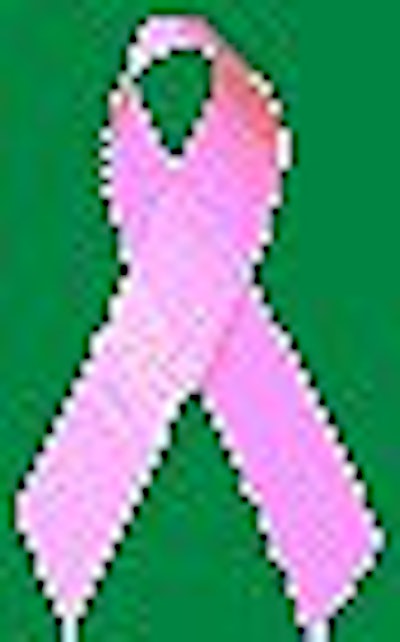
Peruse the grant awards portfolio of the California Breast Cancer Research Program (CBCRP), and a trend quickly becomes apparent: Anything goes when it comes to the fight against breast cancer. You’ll find projects devoted to the effects of herbal tea on cancer prevention; studies on the therapeutic properties of snake venom; and a discussion on whether the bovine leukemia virus is linked to an increased risk of breast cancer.
It’s this combination of science and serendipity that particularly appeals to Kim Pierce, who in September was made the newest member of the advisory board of the CBCRP, the largest state-funded breast cancer research program in the U.S. Pierce is the executive director of the Los Angeles-based Academy of Molecular Imaging, and also is the chief administrative officer for the department of molecular and medical pharmacology at the David Geffen School of Medicine, University of California, Los Angeles.
"The really exciting about CBCRP is that it’s one of the places (researchers) can go if they have a good idea and would like to try it," Pierce said. "The CBCRP is one of the few places that will fund what simply looks like a good idea."
As a breast cancer survivor, Pierce knows firsthand the importance of sticking with a good idea -- she gives full credit to a PET scan for catching her breast carcinoma in time, even though her doctors were dead set against it.
"Either (the idea) works or it doesn’t, but at least CBCRP is giving people a chance to try things out," Pierce added. "It seems to me that’s usually the way things get discovered. That’s why I think that the program’s role is so very important in the whole issue of breast cancer."
During their 2004 grant cycle, the Oakland, CA-based CBCRP will award approximately $14 million to in-state researchers seeking innovative approaches to preventing, treating, and curing breast cancer.
In the past, the program has supported such groundbreaking projects as using FDG-PET for tracking chemotherapeutic changes and tracking new proteins in breast cancer with nuclear magnetic resonance imaging.
In an interview with AuntMinnie.com, Pierce shared some of her thoughts on her appointment and the future of molecular imaging in breast cancer research.
How did your appointment to the CBCRP advisory board come about?
I’m on the board of the Los Angeles Breast Cancer Alliance, which is a member of the National Breast Cancer Coalition. It was through that (L.A.) appointment. Also, a lot of people at UCLA recommended me for (CBCRP), which I was excited about.
I feel really honored to have been chosen to be on the CBCRP board. It’s a long and very tenuous period, where you apply and reapply, and not everybody gets picked.
What do you see as the role of molecular imaging in the future of breast cancer research? Will it be geared more toward guiding therapy (PET for pre- and post-treatment changes) or using radiopharmaceuticals for the early detection of breast cancer?
All of the above. Right now, the gold standard (for screening) is still mammography. As we all know, it has good points and bad points. Any tool that you use for screening is always going to have a lot of false positives and false negatives. Unfortunately, that’s just a fact of life.
Now I don’t know that PET will ever go to that level (as a screening tool) because I think it’s always going to be too expensive. But what I’d like to see is (PET screening) in difficult cases or people that are specifically identified as high risk. Women with the issue of dense breasts, especially younger women, we know that mammography doesn’t work for them.
Molecular imaging will definitely be one of the tools used for (cancer) staging and restaging, as well as monitoring therapy, which is what we have (Medicare) approval for now.
The CBCRP describes itself as a forum to "jump-start new areas of investigation that push the boundaries of research." Where would you like to see molecular imaging go in terms of pushing those boundaries?
I’d like to see more research done on high-risk women. We’re actually working on a project here at UCLA with (Drs. Daniel Silverman and Johannes Czernin) to identify high-risk women -- or even somebody who comes in and there’s something suspicious. Instead of sending her immediately for a biopsy or taking a wait-and-see approach, she’ll be sent for a PET scan. We’re doing that without it being under a clinical trial because a clinical trial would be too expensive and take way too long. We’re working with the genetics people (at UCLA) to help identify these patients.
My passion has always been early detection. I still feel that the number-one thing is detecting cancer early enough to make a difference. I think the really exciting stuff that’s coming down the pike in terms of research is nanotechnology. I think that within the next 10 years, nanotechnology will revolutionize the way that we look at medicine.
Should molecular imaging researchers start revving up their grant-writing engines now that they have someone on the "inside" at CBCRP?
I’m afraid I can’t really influence anything! I would love to see (more molecular imaging research) happen on every level, from the National Institutes of Health to the CBCRP. What it takes is getting more grants written, which I know is not easy. It’s a grueling process. But I would encourage people to follow through with their good ideas.
In my case, nobody thought PET was worthwhile for breast cancer. So it was after my diagnosis with a PET scan that I set out on this mission to convince people that I was right. If there’s something that you believe in with all your heart, you just don’t want to give it up.
By Shalmali PalAuntMinnie.com staff writer
October 30, 2003
Related Reading
FDG shows promise as therapeutic agent for metastatic breast cancer, August 27, 2003
PET outperforms CT in breast cancer staging, May 7, 2003
Pinhole technique abets dedicated breast SPECT imaging, April 24, 2003
Positron emission mammography shows promise for breast imaging, October 28, 2002
Scintimammography catches chemoresistance in breast cancer patients, June 13, 2002
FDG-PET predicts outcome in post-therapy breast cancer patients, March 8, 2002
Copyright © 2003 AuntMinnie.com




















